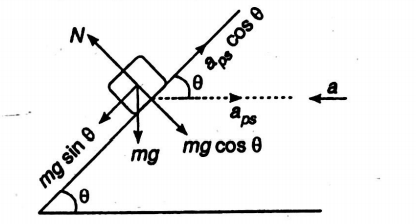Q. A block of mass $m$ is placed on a smooth wedge of inclination $9$. The whole system is accelerated horizontally so that the block does not slip on the wedge. The force exerted by the wedge on the block ($g$ is acceleration due to gravity) will be
ManipalManipal 2007Laws of Motion
Solution:
